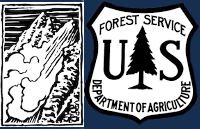From obs 5/23/24: "shooting cracks in the top 4 to 5 inches of new snow in middle basin" Photo: N. Greiner
Northern Madison
From obs 5/23/24: "Toured to the top of PK during today’s storm. Snow was very wet and heavy. We saw no other slides or signs of instability on the way up. Coming down skiers right of flippers, all 3 of us caused small slides and cracking within the new snow. I triggered the largest slide, which was 6-8” deep and 12’ wide." Photo: T. Jordan
shooting cracks in middle basin
shooting cracks in the top 4 to 5 inches of new snow in middle basin
A skier triggered an avalanche on a test slope in Beehive Basin, breaking 12-16" deep and 75' across. The slide failed within the new snow.
Avalanche on Beehive Basin Test Slope
A skier triggered an avalanche on a test slope in Beehive Basin, breaking 12-16" deep and 75' across. The slide failed within the new snow.
Avalanche on Beehive Basin Test Slope
A skier triggered an avalanche on a test slope in Beehive Basin, breaking 12-16" deep and 75' across. The slide failed within the new snow.
Skier triggered large Wet loose on the fin
From obs.: “Our party (3) triggered a significant wet loose slide on the fin today. I, the first skier dropped in next to existing tracks from earlier in the morning. I made a couple of small turns in unskied snow to test it and decided that not much was moving. As I continued down the wet surface snow started to slide and accumulate. My partner called me on the radio to tell me a lot of snow was moving behind me and I cut left. I traversed hard to lower angle terrain until I felt I could safely descend the rest of the slope. My partners descended the bed surface until they could traverse out.
We made several key mistakes today. We knew it would be warm and that we should be up and down early. We left later than planned, moved slower than expected and failed to adjust our plan. We mistook lack of wet loose activity on similar aspects and elevations on features we could see as sign of stability. We failed to make a plan B or establish a turnaround time. We interpreted a party ahead of us that skied the slope as a go ahead. Another party approaching behind us added pressure to go. They also skied the slope after us in similar style to my partners.
In our favor, we communicated well, radios were key, stayed calm and we managed ourselves through the situation. I feel humbled and lucky to have gotten away with a free lesson. One that I didn't think I should have needed.”
On 5/4/24 Skiers triggered large wet loose slides on the Fin near Cooke City
Wet Snow in Beehive
We toured into beehive today starting at around 7:30 AM. We found about 2-4" of fresh wet and heavy snow. Lightly snowing all day until we left around 12 when the snow picked up a bit. Passing fog in and out all day. Around 9400' we dug a pit to the ground (east facing). ~95cm deep. We found about 5" of thick snow from the last two days, on top of a thin layer of graupel and ~4" of very wet snow that had not refrozen from the previous warm-up. The rest of the snowpack was also wet to the ground, but not to the same extent that the upper couple of inches were. Near the ground was definitely a weaker structure, but was also now saturated and closer to "corn snow" than anything. Also noted an ice layer about half way though the snow pack.
In our pit we got cracking in the new snow (ECTN9) and in the top (8-9" down) of the saturated snow pack (ECTN18), but no propagation. A shovel shear test revealed our two layers being about 8-9" down at the bottom of the very wet layer, and at the interface with the ice layer halfway down. No collapses were observed. No avalanches were observed. We got some sluff while we were skiing, but only when skiing/hop turning aggressively. We chose to ski some steep and short couloirs.
The skin track had decent coverage besides a few spots in the trees. It was rain mixed with snow in the parking lot around 12:45, which quickly turned to rain as we drove towards big sky.
Whumps/Collapses in Beehive
From obs: "When setting out to Beehive Basin today we only imagined wanting to bail if rain line was at the trailhead, but had not expected our seasons long standing PWL to turn us around. With a few inches of snow at the trailhead and temps just at freezing we set out. The new snow yesterday/last night capped a warm snowpack, keeping the snowpack from freezing at all (no crusts or other signs of superficial freezes up to 9,2000ft where we bailed despite the mid-20’s temps recorded overnight). Almost immediately out of the trailhead we got thunderous collapses so big we at first thought it was noise from control work at Big Sky. Further along we got collapses extending hundreds of feet out, valley wide and echoing up the basin. We dug to the bottom out of curiosity and found a saturated and unfrozen snowpack. The bottom 30cm was still all facets, giving the appearance that the remaining 90-110cm of consolidated snowpack was floating on air. We’re assuming the whumps/collapses are traveling along this layer of basal facets. I’m sure once it gets a solid freeze things will be alright again, but will the new snow continue to insulate the snowpack the next few nights despite the forecasted solid freezing temps? Or is this only a phenomenon that happens the 1st night of new snow falling on a warm snowpack? "
